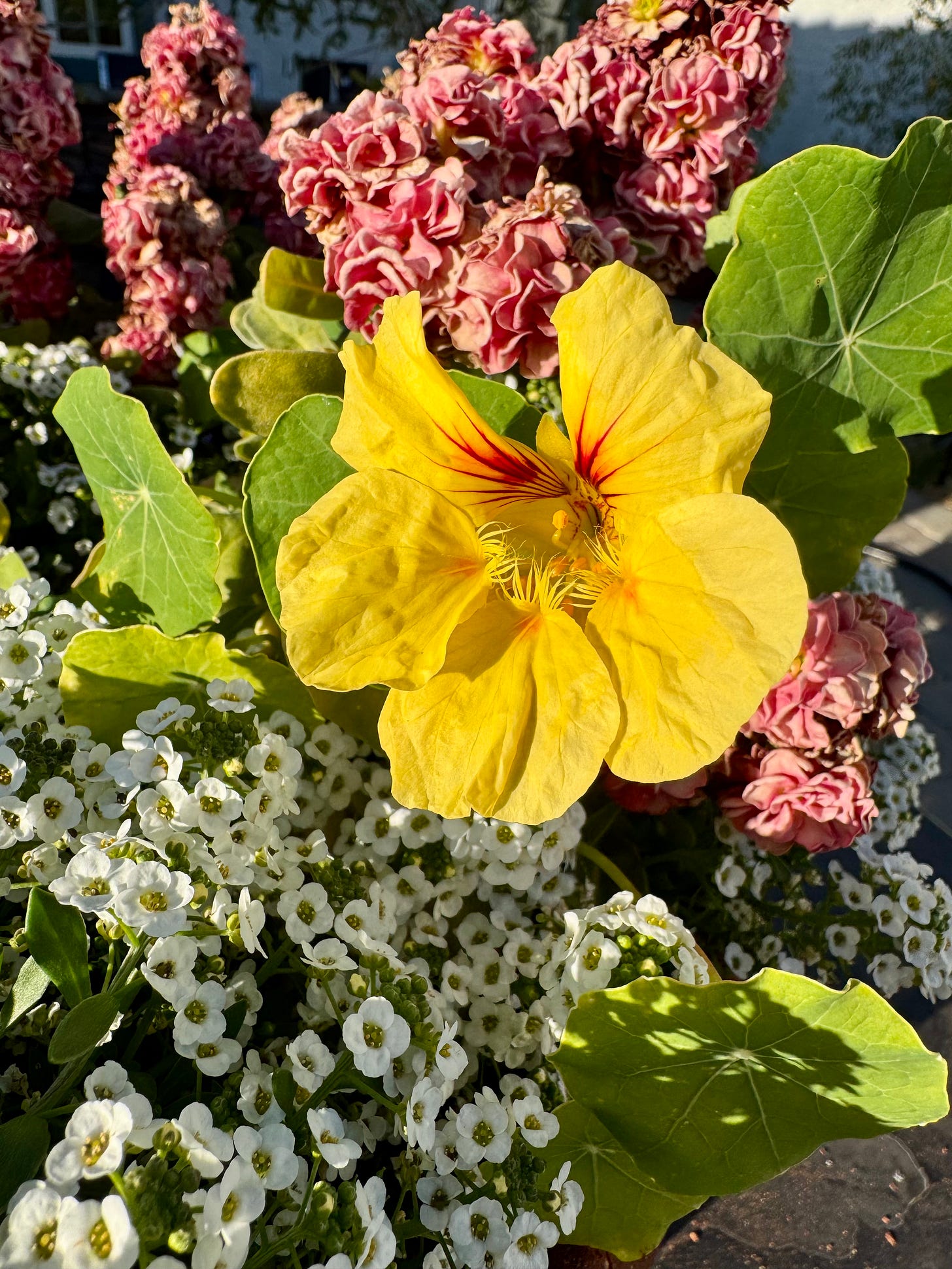How I Grow Tomatoes in the Desert
There are as many ways to grow tomatoes as there are gardeners, but this method works for me.
The Mojave desert is not a hospitable place for tomatoes. Edible annuals of all kinds struggle here, whether in the ground, in containers, or in raised beds. It is too hot and too cold. Still, there are many successful vegetable gardeners in Las Vegas.
I wish I were among them.
When I lived in the high deserts of Utah, tomatoes were a more dependable crop. I started them from seed, under shop lights, in the basement of our Salt Lake City bungalow, and transplanted them early, covering them with little cloches or, if I started them sooner, water walls. In July, I harvested bushels of the most beautiful heirloom varieties: Cherokee Purple, Brandywine Pink, Japanese Trifele, Black Krim, Cosmonaut Volkov. There were so many tomatoes. I roasted and froze them, and we ate sauces and soups straight through Christmas.
In Las Vegas, I am far less successful. My mouth waters as the temperature soars. And then all the lovely, little flowers drop (tomatoes won’t set fruit when it gets much hotter than 90°F). The fruit that has set turns a sickly white, burnt up by the sun.
But since those first, failed attempts, I’ve settled on a dependable and boring method that consistently delivers results, even if it means forsaking the grand expectations of heirloom indeterminate types.
Instead, I focus on a few hybrids that perform well. They do not taste as extraordinary as a Cherokee Purple on a warm, late summer day, but perhaps a tomato eaten off the vine in May cannot compare no matter the variety. But sliced thick and stacked tall on toasted sourdough bread, with plenty of mayo, and I can forgive the odd timing of my abbreviated tomato harvest.
The key to growing tomatoes successfully in Las Vegas is to start them before it is prudent, before I feel comfortable, so that they set fruit before the heat sets in, the timing of which is quite variable. This means that I start them earlier than suggested, and in doing so risk frost and nights that get too cold.*
In the desert, we’re all riding tomato-bearing camels, threading the needle’s eye of the valley’s narrow growing season.
I account for cold by growing them in simple, black plastic containers. Five-gallon nursery containers, the kind that have piled up in the shed from years of too many visits to the nursery, do just fine. They absorb the sun’s heat, keeping roots and soil warm enough for strong, active growth.
At planting time, I put tomato cages into the containers, and then I leave them alone, watering when the soil begins to dry on top. If the temperature dips, I move the containers next to a warm wall or into the greenhouse. If it gets too hot too soon after fruit has set, I move them into a shadier, cooler part of the garden while I wait to harvest.
Early maturing, determinate varieties are best. They are not as sexy as heirlooms—but my goal is tomatoes of any kind. I grow Early Girls, Hawaiian Tropic, and Heatmasters. I make an exception for cherry tomatoes. For these, I like Sungolds, a yellow pear, and then a red type that isn’t too tomato soupy (Sweet 100s taste like Campbell’s condensed tomato soup straight out of the can). This year I’m trying Chocolate Sprinkles. I don’t grow any of my tomatoes by seed anymore. I pick up small starts at a nursery.
Determinate varieties tend to get one large flush of fruit; sometimes there is a second flush that may or may not ripen, depending on the temperatures in late spring. Then, they are done. I pull them from their homes and throw them into the compost. I use the soil as a mulch in my other garden beds and I hunker down for the long, hot days of summer, before doing it all again in fall.
My fall-planted tomatoes are not as abundant, but they will sometimes grow through the winter if I move them into the greenhouse. Their quality deteriorates—particularly taste—but this means they are better for soups and sauces, which is fine. By then, the days have shortened and cooled so that warm, tomato-based soups are now finally in season.

*I appreciate the recommendations from the local extension office, but I get the sense that evidence-based gardening has become something of a fetish for these revered horticultural institutions. At any rate, our climate is changing too quickly to wait for peer-reviewed gardening practices. It’s a wild world out there.





I appreciate your note about overly relying on the recommendations of your local extension office... Evidence-based gardening doesn’t always account for the hyper-local environment of your property (or the impacts of increasing climate change). And sometimes, you can make a variety thrive for a bizarre reason that others can’t replicate. ¯\_(ツ)_/¯
Just bought a Sungold plant this afternoon from my son's school farmer's market! I used to always start seeds but I "cheat" now and do transplants too. With springtime weather so unpredictable, your method sounds like the way to mitigate the too-hot, too-cold conundrum while on our tomato-bearing camels:-). I remember a couple years ago when we had an uncharacteristically mild June--it was like the best tomato weather ever! (Not expecting to see that again anytime soon though!) Really enjoyed the post, thank you!